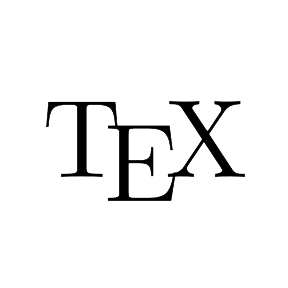TeX

TeX is a typesetting system created by Donald Knuth at Stanford University in 1978. TeX works by reading a source file containing text and macro definitions which instruct the TeX engine how to typeset the document. It also reads TFM files containing character widths, ligatures, and other information relevant to a particular font. After processing the source document, TeX outputs a DVI file which is a device-independent binary file containing the positions of all characters in the document. The DVI file is then supposed to be processed by a device-specific program that combines the DVI file with the necessary fonts to create something that can be sent to a printer. Nowadays it is more common to use one of the extensions to TeX, e.g. pdfTeX which outputs a pdf file instead of a DVI file.
Here are 1,573 public repositories matching this topic...
-
Updated
Jun 21, 2012
Solutions to some exercises of Douglas R. Stinson's textbook Cryptograph Theory and Practicce
-
Updated
Jan 21, 2013
LaTeX-beamer theme for the ZBH
-
Updated
Jan 13, 2014 - TeX
Smooth Orthogonal Drawings
-
Updated
May 14, 2014 - Java
Derivation of backpropagation of error formula in laTeX
-
Updated
Jul 28, 2014 - TeX
PyDvi is a Python library to read and process DVI (DeVice Independent) files, the native output of LaTeX. The library provides a DVI machine as a base class which can be extended by the user and plugged to a TeX daemon in order to render contents on-the-fly. Also the source code provides a DVI viewer featuring an hardware accelerated rendering o…
-
Updated
Sep 22, 2014 - Python
(La)TeX packages that makes you save the cost of writing thousands of \expandafter.
-
Updated
Oct 17, 2014 - TeX
-
Updated
Nov 15, 2014 - TeX
Created by Donald E. Knuth
Released 1978
- Followers
- 91 followers
- Website
- ctan.org/pkg/tex
- Wikipedia
- Wikipedia